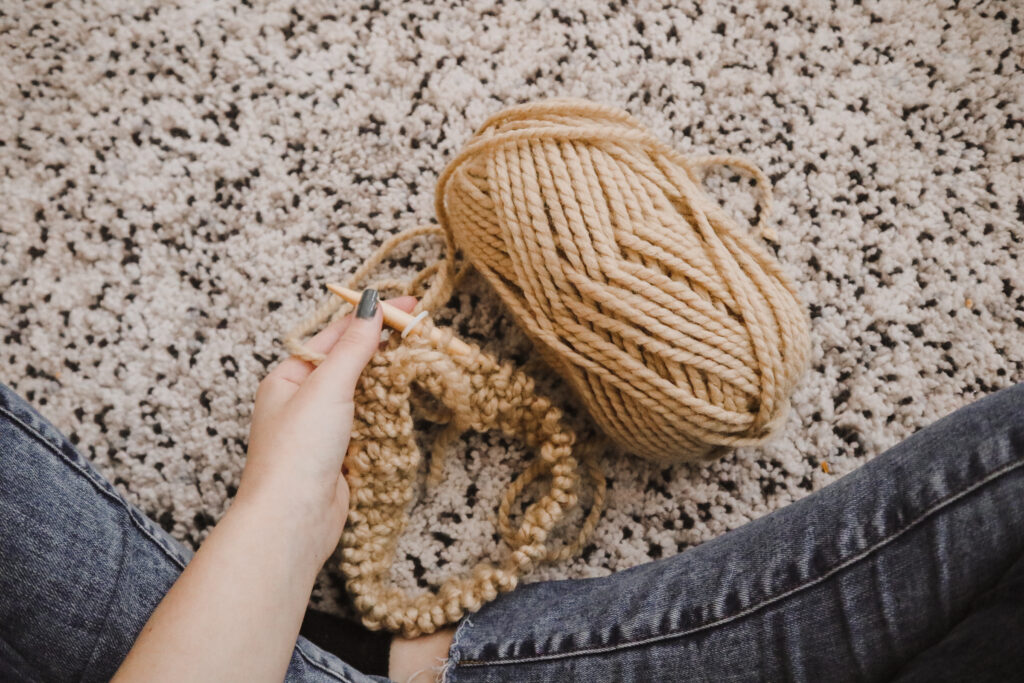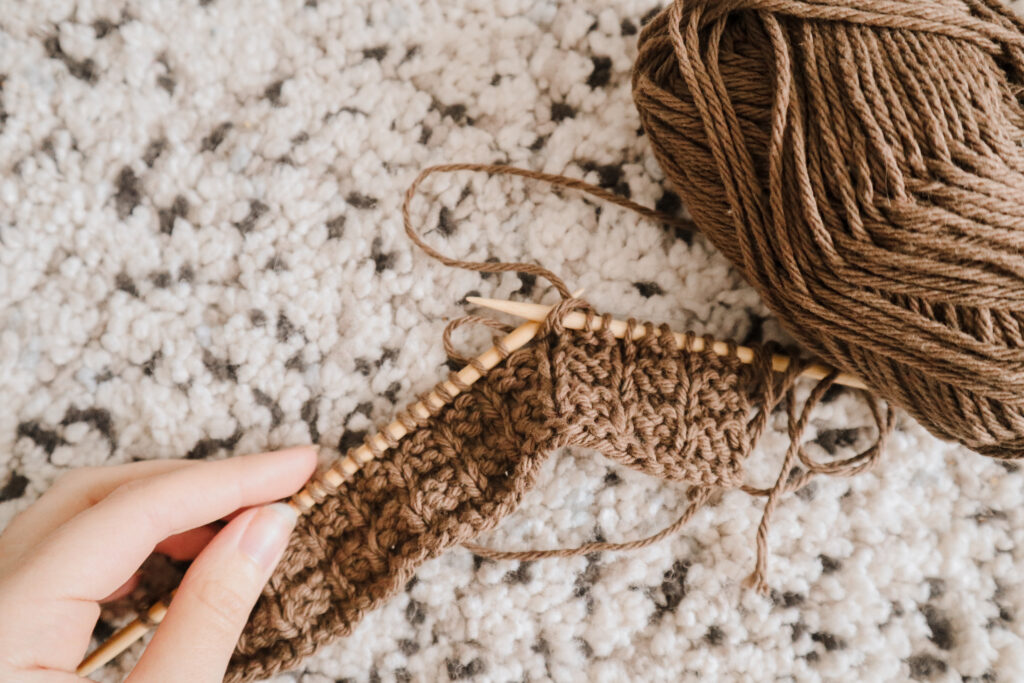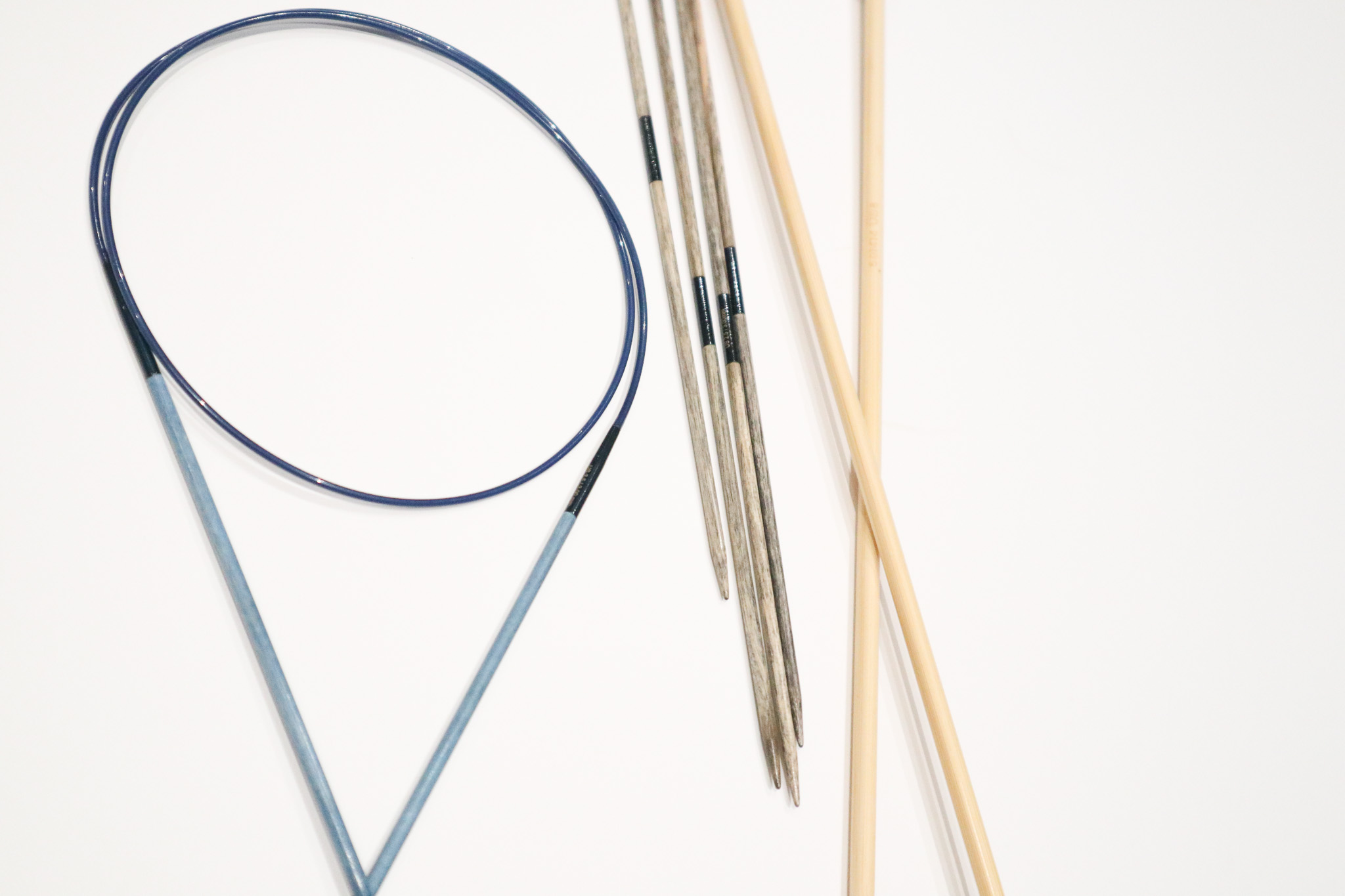Everything You Need to Know About Knitting Needles
When you’re a beginner at knitting, it can easily become overwhelming when it’s time to start picking out supplies. Figuring out what knitting needle sizes are best for beginners is easier than you think.
For many beginners, they have no idea where to start. “Which knitting needles do I get? What size is best for beginners? What are all these NEEDLE SIZES!?”
Going to a store and standing in front of a wall of multiple different types and sizes can be daunting and you may say
“ah screw this, it’s too overwhelming!!” and walk out empty-handed, feeling defeated.
Don’t give up, because I am here to help you! I promise that yes, it may seem very overwhelming, but I PROMISE that knitting is so easy to grasp and learning about knitting needles is a lot easier than it seems.
Some links in this post contain affiliate links. This means I get a commission if you purchase the product through my link at no extra cost to you. As an Amazon Associate, I earn from qualifying purchases.

Knitting Needle Types
There are 2 main types:
Straight knitting needles
Circular knitting needles

Straight Knitting Needles
Straight knitting needles are the most basic needles and are often what beginners start with. These needles are used for flat knitting, or knitting back and forth.
They come in 2 different forms: single-pointed needles and double-pointed needles, also known as dpns. Single-pointed needles have a ball-like end tip so that the yarn won’t fall off the needles. Dpns are very different as they have 2 pointed sides. Dpns are typically used to knit small circumferences like a top of a hat, mittens, gloves, etc. Since they are used for small circumferences, they come in sets of 4-5 needles.
You can knit back and forth using dpns but it’s a lot trickier as you can easily lose stitches off the other side.
Circular Knitting Needles
Circular knitting needles are two needles that are attached together by a cord. They are used for knitting in the round like a hat, shirt, sweater, dress, etc.
Personally, I prefer circular knitting needles for a few reasons.
I have the clover interchangeable knitting needles. I can twist off the cord as different cords are different lengths, and put the cord on another pair of needles. If you plan on knitting a lot of pieces, I’d suggest interchangeable circulars for this reason.
The second reason is that circular needles are a lot easier on your hands and wrists than straight needles. I find I don’t need to stop while knitting a project on circulars as I do when I knit using straight needles.
The only small downfall with interchangeable circular knitting needles is the price. They tend to be on the pricer side, especially depending on the material of the needle you choose.
As stated earlier, they are connected by a cord. The cord length is important for different projects, but we will get into that later.

Knitting Needle Materials
Now that we talked about the different types, it’s time to pick the type of needle material you want to use to knit. There are lots of different needle material types like:
Metal
Plastic
Bamboo/ Wood
Carbon Fiber
Glass
Metal
There are a few different metal knitting needles like aluminum, stainless steel, and nickel. Often, beginners tend to pick metal as their first choice as they are easily available at local stores.
Metal needles are easier to work with as the stitches can easily slide off the needles, however, this can also be quite annoying as you may lose a stitch and not even realize it until you’ve done a row.
Since metal isn’t that flexible, they are often very hard on the hands. Because of this and my own personal experience, I only have a few of these.
Plastic
Plastic knitting needles are definitely the most affordable, however, because of how cheap they are, they tend to warp and bend.
Because of this, I am not a fan and I don’t personally own any anymore.
Bamboo / Wood
Bamboo and wood knitting needles are very similar. The only big difference between the two is the price, with wood being slightly more expensive.
Both needles are a great choice for beginners, especially because you won’t easily lose stitches as you would using metal needles.

Bamboo and wood are my go-to for knitting needles. I will say from my experience, I find that the bamboo may start to split at the tip of the needle. This can be very annoying, with the yarn catching each time you knit a stitch.
Also, if you’re a frequent traveller who travels by plane, having bamboo and/or wood needles is a huge benefit as most airlines only will allow these needles. Make sure beforehand though that the airline allows them.
Carbon Fiber
Carbon fiber knitting needles are needles I have yet to knit with due to being on the pricier side.
These needles might be pricy, but from reading reviews, many other knitters live by carbon fiber needles. They are a very strong and flexible needle.
Glass
Believe it or not, there are glass knitting needles. Again, these are knitting needles that I have yet to try. If I’m being honest, a little scared to try these.
Glass knitting needles are smooth and surprisingly pretty strong. Because the needles are made of glass, they need to be properly and safely stored.
Knitting Needle Sizes
Here’s where things tend to become overwhelming for beginners: needle sizes.
But I promise you, they are much easier to understand.
Knitting needles come in millimetre & US sizes. They’re are so many sizes to pick from, so how do you pick one for your project!
Each different weight of yarn has a different recommended needle size. You know how sometimes you’ll find very thick, bulky yarn? And then some very fine, thin yarn? This is the weight of the yarn. The finer the yarn, the smaller the needle and the thicker the yarn, the bigger the needle
Knitting Needle Lengths
Needles come in different lengths, and it all depends on the project what length needle to get. This is another reason why I love interchangeable knitting needles.
Straight needles are typically available in lengths from 10″ (25 cm) to 14″ (36 cm), while DPNs are available from 4″ (10 cm) to 10″ (25 cm).
Circulars are attached by a cord. The cord length comes in a much larger variety of sizes of 16″, 24″, 29″, and 36″ (40 cm, 60 cm, 80 cm, and 90 cm). Because of the different length sizes circulars have to offer, these are my personal favourites.
If you’re knitting up a hat, you’ll need a 16″ (or 40 cm) cord whereas when knitting a sweater, you’ll need a bigger cord and possibly more than one size. This is why I prefer interchangeable knitting needles.
Free Knitting Needle Conversion Chart
An easy way to remember what knitting needles are best for your project is having a conversion chart handy. I did all the work for you, all you need to do is download and print this FREE conversion chart.
Best Knitting Needle Sizes For Beginners
Truthfully, the best knitting needle is whatever is needed for your project. Every pattern will let you know what size is recommended. If you’re knitting in the round, they will clarify what length cord is needed.
Typically, I think beginners should start with thicker yarn which for needle sizes, you’ll be looking at needles sizes 11 US (8 mm) and up. Knitting bulkier items is a lot easier than thinner yarn, plus with thicker yarn and bigger needles, you’ll finish the project faster. The faster you finish a project, the more you will want to make.
Personally, I think that every knitter should have at least these 2 sizes listed below, especially beginners as these are the 2 most common knitting needle sizes you will find in knitting patterns. That is size US 7 (4.5 mm) and US 8 (5 mm). You’ll find that most patterns require either one of these.
Another 2 sizes that I think would be important to have on hand starting are US 6 () and US 9 (). Are they must-have? Honestly, no. However, they are commonly found in a lot of patterns, but not as much as the other 2 mentioned.

Tips for Beginners
Once you become more knowledgeable in knitting and understand your knitting technique (being a loose or tight knitter), then picking needle sizes will become much easier and knitting with thinner yarn will also be easier.
With that being said, a tip for beginners to avoid becoming discouraged is to not start right away with a thinner yarn or a smaller-weight yarn. Projects made with a smaller weight may take longer, especially when you are first starting out and you may become discouraged.
As stated earlier, knitting with thicker, bulkier yarn is a better choice for beginners.
Thanks for reading & happy knitting,
Kate

